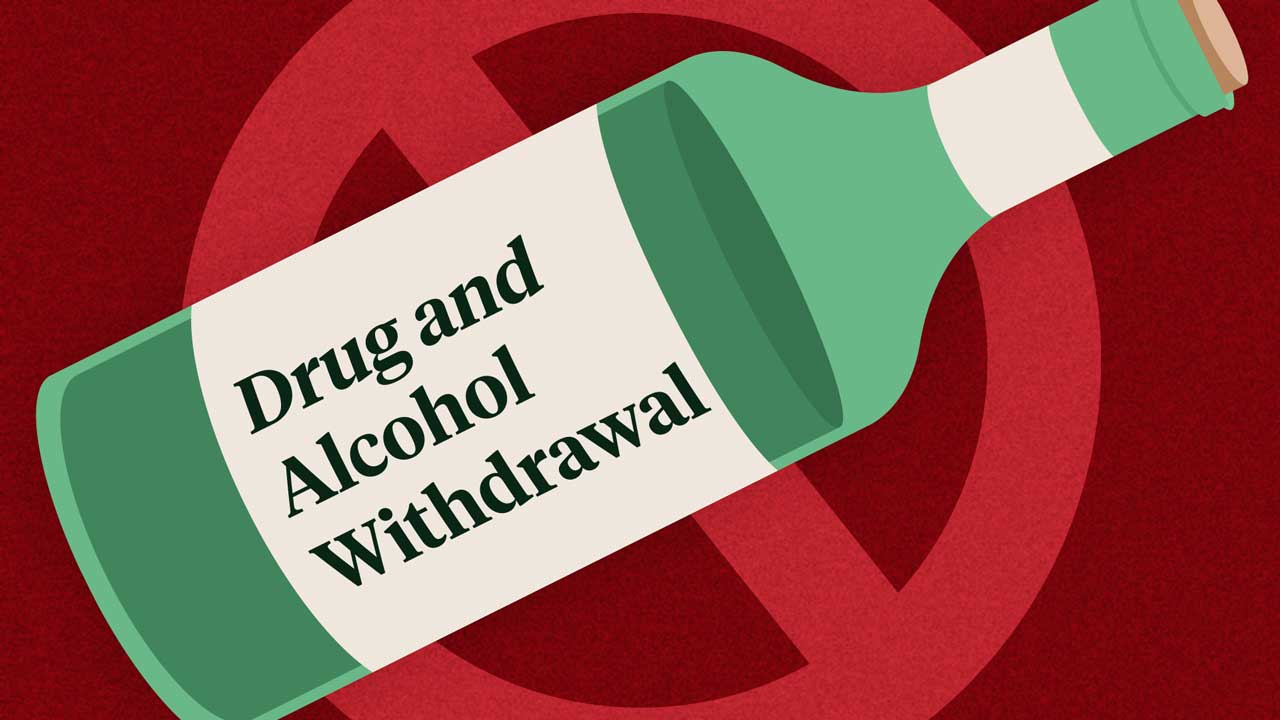What is Withdrawal?
Withdrawal is the process of cutting out or cutting back on alcohol or drugs after a period of prolonged or excessive use (ADF 2023).
This can lead to a variety of symptoms. A common example of withdrawal is feeling a headache slowly develop when you forgo your morning coffee.
It’s an unpleasant feeling, but the headache is your body responding and adjusting to the lack of caffeine in your system. Your body is attempting to maintain homeostasis, i.e. stable internal conditions (Kenny 2014).
Dependence and Addiction
In the context of withdrawal from drugs and alcohol, it is crucial that the concept of addiction and dependence is first acknowledged. Prolonged or excessive use of a substance can lead to tolerance and physical dependence (SA Health 2024).
It’s this dependence that the body has on the substance that then leads to withdrawal if the substance is abruptly stopped or reduced.
If people who are very dependent on alcohol cease drinking, they will likely face a range of physical and cognitive symptoms (Healthdirect 2024). Note that it is extremely dangerous and even life-threatening for someone who is addicted or dependent on alcohol to cease drinking suddenly without pharmacological/medical intervention and support (Alcohol Help 2023).

Types of Dependencies
Physical Dependence
Physical dependence is a pharmacologic effect characteristic of various types of substances. It is defined as the occurrence of an abstinence syndrome (withdrawal reaction) after the sudden discontinuation of a drug, substantial dose reduction or administration of an antagonist (a substance that disrupts the physiological action of another) (Polston & Wallace 2017).
In the case of physical dependence, not only has a person used a substance long enough for their body to rely on it to feel ‘normal’ (ADF 2023), but they will also require more and more of the drug to achieve the initial positive effect and will rely on continued use of the drug to prevent painful and uncomfortable withdrawal symptoms (Selner 2018).
Psychological Dependence
Generally, the term psychological dependence encompasses both the emotional and mental processes that are associated with the development of, and recovery from, a substance use disorder. It is worth noting, however, that there can be no complete separation of emotion and cognition from physiology (American Addiction Centers 2023).
An example of psychological dependence is if a person expressed uncertainty about being able to stop using the substance of choice; or if they displayed signs of anxiety if someone tried to intervene or prevent them from taking the substance (American Addiction Centers 2023).
Severity of Withdrawal
The severity of withdrawal will depend on the following factors:
- Which substance(s) the person has been taking
- How long the person has been using the substance for
- Their age
- Their physical health
- Their psychological characteristics and health
- The method of withdrawal
- Physical dependence.
(ADF 2023; Healthdirect 2024)
Withdrawal Symptoms
Symptoms vary between individuals and will depend on which substance the person is withdrawing from.
For information about the typical withdrawal symptoms for specific drugs, see the Alcohol and Drug Foundation’s drug list.
As a person’s body becomes used to functioning without the drug, withdrawal symptoms will range from mild to severe and can be life-threatening.
Generally, the symptoms of withdrawal will be the opposite of what the drug feels like. An example of this is when withdrawing from a drug such as alcohol - a depressant - a person may experience restlessness and agitation (ADF 2023).
Common symptoms related to drug withdrawal include:
- Insomnia
- Irritability
- Changes in mood
- Depression
- Anxiety
- Aches
- Muscle spasms
- Pains
- Craving
- Fatigue
- Hallucinations
- Nausea.
(Healthdirect 2024; Gonzales 2020)

Coping With Cravings
When a person is addicted to a drug, their body knows that the fastest way to feel good will be to take that particular drug.
Cravings will generally fluctuate in their frequency and they may be weak or strong. Managing cravings is important in the long term, as they may come back even years after a person has stopped using the substance (ADF 2023).
Craving management may include mind retraining techniques such as productive distraction or relaxation. This can involve reading, watching a movie, meditating or exercising (ADF 2023).
Remind patients that their brain has acquired a pattern of thought over time, but they are capable of retraining their brain to follow a new thought pattern (ADF 2023).
The length of time that someone will experience withdrawal symptoms for depends on many factors, including the type of drug and how long the person has been using it. Generally, withdrawal symptoms will last between a few days to a few weeks. However, cravings can last for a long time (ADF 2023).
There is also the option of treating withdrawal symptoms with certain medications (pharmacotherapy) (ADF 2023).
Is Withdrawal Safe?
It is vital that a person has medical supervision to carry out a safe withdrawal.
This is particularly important when withdrawing from alcohol, gamma-hydroxybutyrate (GHB), benzodiazepines or ketamine (ADF 2023).
Recovery must take place in a safe environment, such as at home (if appropriate), in a detox facility or in a hospital (Healthdirect 2024).
Steps to Safe Withdrawal
The following steps can support the process of a safe withdrawal:
- Talking to a doctor or alcohol and other drugs treatment service
- Writing down a list of reasons for giving up the drug
- Planning what to do if drugs are used during withdrawal
- Identifying situations/contexts in which drug-taking may be particularly tempting
- Learning the risks of overdosing
- Keeping busy (watching movies, exercising, reading)
- Practising stress management and distraction techniques
- Practising self-care.
(ADF 2023; Gonzales 2020)

Test Your Knowledge
Question 1 of 3
Medical supervision is advised when withdrawing from …?
Topics
Further your knowledge
 Free
Free Free
Free Free
FreeReferences
- Alcohol and Drug Foundation 2023, Withdrawal, ADF, viewed 12 December 2024, https://adf.org.au/reducing-risk/withdrawal/
- Alcohol Help 2023, Alcohol Withdrawal, Alcohol Help, viewed 16 December 2024, https://www.alcoholhelp.com/alcohol/withdrawal/
- American Addiction Centers 2024, What Is Psychological Dependence?, American Addiction Centers, viewed 16 December 2024, https://americanaddictioncenters.org/the-addiction-cycle/psychological-dependence
- Gonzales, M 2020, Withdrawal Symptoms of Alcohol and Drugs, DrugRehab.com., viewed 16 December 2024, https://www.drugrehab.com/addiction/withdrawal-symptoms/
- Healthdirect 2024, Addiction Withdrawal, Australian Government, viewed 16 December 2024, https://www.healthdirect.gov.au/addiction-withdrawal
- Kenny, P 2014, What Causes Drug Withdrawal?, BrainFacts.org, viewed 12 December 2024, https://www.brainfacts.org/ask-an-expert/what-causes-drug-withdrawal
- SA Health 2024, Alcohol Withdrawal Management, Government of South Australia, viewed 16 December 2024, https://www.sahealth.sa.gov.au/wps/wcm/connect/public+content/sa+health+internet/clinical+resources/clinical+programs+and+practice+guidelines/substance+misuse+and+dependence/substance+withdrawal+management/alcohol+withdrawal+management
- Selner, M 2018, ‘Drug Dependence’, Healthline, 24 April, viewed 16 December 2024, https://www.healthline.com/health/drug-dependence
 New
New 
